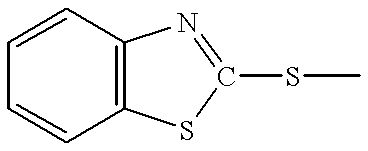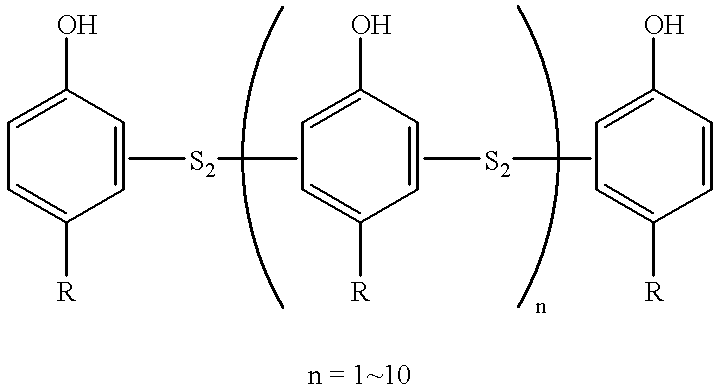Stabilizer bushing
a technology of stabilizer bushing and bushing plate, which is applied in the direction of machine supports, shock absorbers, torsion springs, etc., can solve the problems of deteriorating durability of bushing plate, unable to achieve desired stability in operation and riding comfort, and unable to reduce the elastic modulus (spring constant) of the entire pla
- Summary
- Abstract
- Description
- Claims
- Application Information
AI Technical Summary
Benefits of technology
Problems solved by technology
Method used
Image
Examples
Embodiment Construction
, which involves the use of a thiazole-based material containing DM and phenol polysulfide as a crosslinking tackifier, shows a good adhesive strength even if the second molded rubber is formed after the passage of t.sub.90.
The reason why Examples 1 to 3 and Examples 4 and 5 have vulcanizability (t.sub.90 -t.sub.50) different from that of Comparative Example 2 and Comparative Example 1, respectively, although the kind (thiazole-based vulcanization accelerator is for the former; sulfenamide-based vulcanization accelerator is for the latter) and amount of vulcanization accelerator is the same is presumably because the crosslinking tackifier incorporated exerts an effect of retarding vulcanization. The reason why Examples 1 to 3 show no change of vulcanizability although the amount of the crosslinking tackifier is increased is presumably because even the incorporation of a small amount (0.5 phr) of a crosslinking tackifier causes the effect of retarding vulcanization to reach saturatio...
PUM
| Property | Measurement | Unit |
|---|---|---|
| temperature | aaaaa | aaaaa |
| thickness | aaaaa | aaaaa |
| thickness | aaaaa | aaaaa |
Abstract
Description
Claims
Application Information
 Login to View More
Login to View More - R&D
- Intellectual Property
- Life Sciences
- Materials
- Tech Scout
- Unparalleled Data Quality
- Higher Quality Content
- 60% Fewer Hallucinations
Browse by: Latest US Patents, China's latest patents, Technical Efficacy Thesaurus, Application Domain, Technology Topic, Popular Technical Reports.
© 2025 PatSnap. All rights reserved.Legal|Privacy policy|Modern Slavery Act Transparency Statement|Sitemap|About US| Contact US: help@patsnap.com



